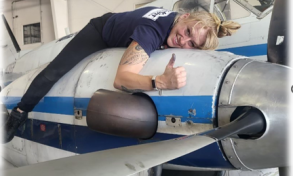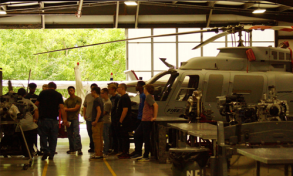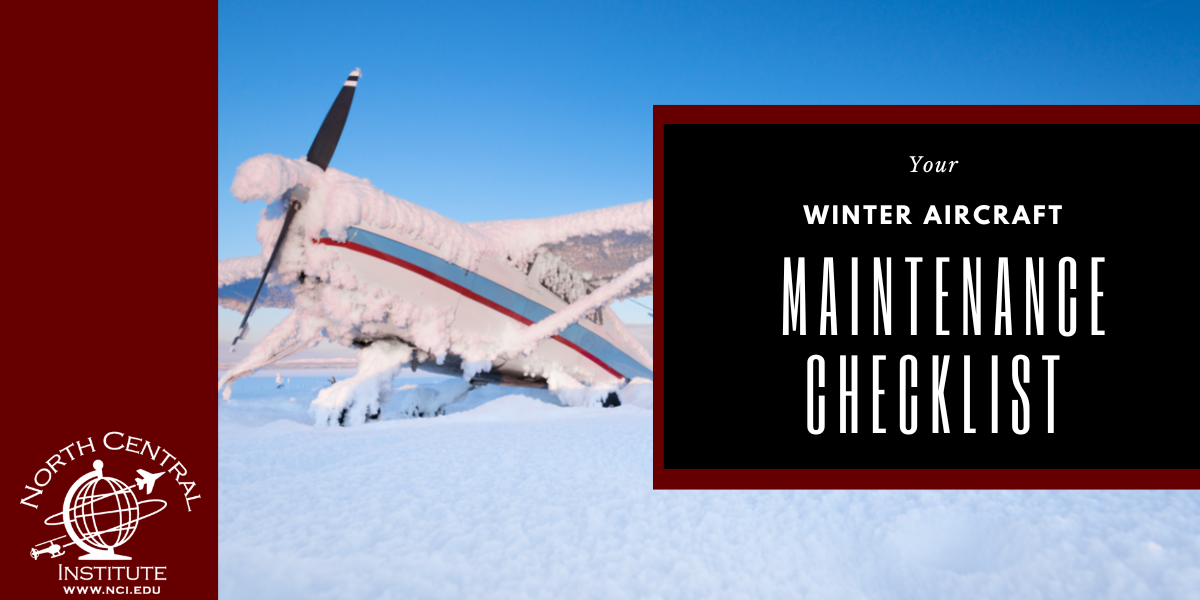As winter starts to finally settle in, there are some tasks you should be performing to ensure your aircraft is ready to withstand the cold weather. Along with the regular maintenance you’re already doing, the change in temperature means that there are some extra steps you should be taking. Whether your aircraft is remaining active throughout the winter or being safely stored away until spring, winter maintenance is a must. Here is your winter aircraft maintenance checklist!
1) Take care of the exterior. Before the cold weather sets in, it’s a good idea to wash the exterior of your plane. This will remove any dirt and debris, along with protecting the paint and preventing oxidation. And don’t forget about the windows as well! Once the exterior is clean, apply an airplane wax to further protect the surface from snow and ice.
2) Clean up the interior. While you are cleaning the outside, you may as well clean up the interior as well. Dust your instrument panels, vacuum the floors and seats, and use glass cleaner to make sure your windows and windshield are clear. If you have leather seats or any wood paneling, make sure to give them the proper treatment to keep them looking good.
3) Lubricate your airframe. As the temperatures start to drop, the cold can cause components to become rigid. Lubricating the airframe can reduce metal-to-metal friction and reduce any wear and tear caused by stiff parts.
4) Change your oil. Just like with your car, airplanes need regular oil changes. Oil changes help keep your engine running smoothly and remove any harmful contaminants that have entered the system. For example, if any water has gotten in, an oil change would get rid of it and reduce the risk of it freezing and causing corrosion. During the winter, it can also be a good idea to use a thinner oil. That way, even if the cold weather causes it to thicken, it is still an acceptable viscosity.
5) Top up your fuel tank. Fuel tank maintenance can be expensive. To make sure your fuel tank makes it unscathed through the winter, make sure you are keeping it full. This will help prevent condensation from building up when there are changes in temperature throughout the winter. That condensation can cause corrosion of the fuel tank.
6) Keep an eye on your battery. Batteries do not like the cold. If your battery cannot operate in colder temperatures, it may need to be replaced completely. It’s also a good idea to have a backup battery. If you live somewhere with particularly harsh winters or do not plan on flying your airplane frequently, you might want to consider removing the battery and storing it somewhere warm.
7) Consider a preheater. If you want to take your plane to the skies this winter, you might want to consider a preheater. Preheating your engine can keep everything running smoothly. There are forced-air and electric preheaters available on the market. If you already have a preheater, make sure to test it and make sure it is still able to properly warm your engine. Of course, the best preheater is a heated hangar, but that isn’t always a viable option.
8) Cover it up. Whether you plan on flying this winter or not, if your plane is parked outside, cover it up! Not only can snow and ice damage the aircraft, but also exposure to sun, rain, and wind. Protect your plane with a tarp. If you don’t have plans to use your aircraft until spring hits, you may want to look into long term storage instead. No matter what you do, regularly check your flight controls and other cold-sensitive systems. If a snow or ice storm hits, remove any heavy accumulation that could mean added stress on the aircraft.
No matter the season, regular aircraft maintenance is just apart of the aviation life. If you’d like to learn more about aviation maintenance and what it takes to become an aviation maintenance technician, contact NCI today!










